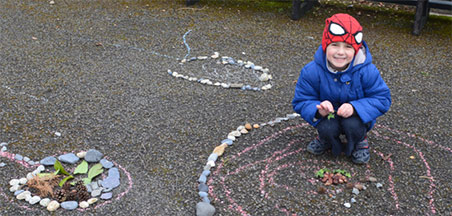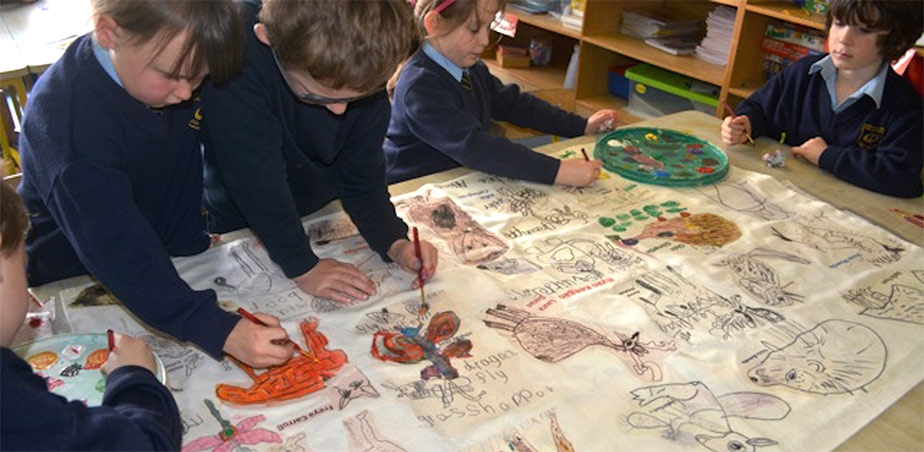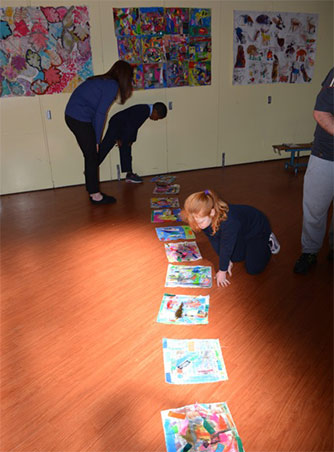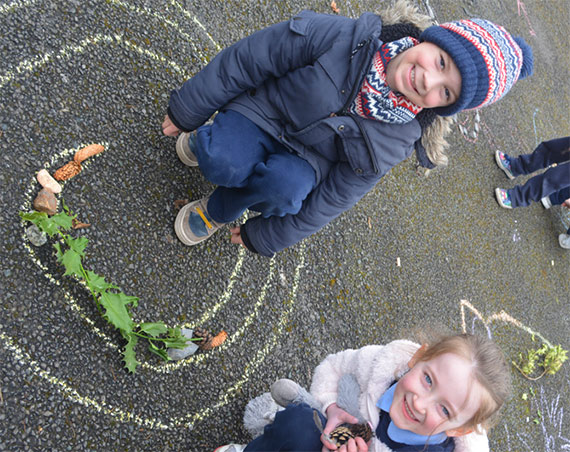Refine by Region
Refine by Art Form
Refine by School Level
CRAFTed
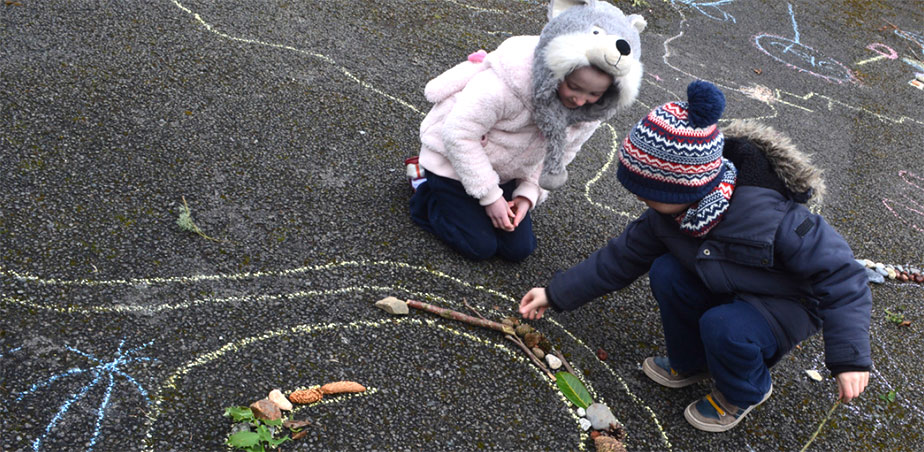
Children at St. Mary’s National School in Blessington, Co Wicklow - CRAFTed Project courtesy of Ciara Harrison
What was the project about?
This project took place between St. Mary’s National School in Blessington, Co Wicklow (teacher Judy Lawler) and artist Ciara Harrison. Please see attached Appendix for background and further details of the workshops.
The project is part of the CRAFTed initiative run by the Design and Crafts Council of Ireland. The main media we are working with is fabric and fibre, experimenting with fabric dyeing, tie-dye, embroidery and printed textiles. The project is process-led enabling the children to explore and experiment at their own pace through facilitated workshops. We decided jointly that the project should be documented both with the use of photography and film as well as through the children’s reflections, thus enabling the children’s voice and thoughts to be heard and seen throughout this project. This was done in the form of notebooks or artists journals, including text and drawings as well as samples from workshops.
Who was involved?
It was a collaboration between twenty four senior infants of St. Mary’s National Junior School, Blessington, teacher Judy Lawler, and artist Ciara Harrison.
How did it get started?
The collaboration came about through the Design and Crafts Council of Ireland (DCCOI) CRAFTed initiative. This is an arts-in-education programme, specifically for primary schools where a craftsperson is paired with a teacher and students of a primary school.
We initially met at a collaborative evening organised by the DCCOI in the Kildare Education Centre. The evening was facilitated by a craftsperson, who gave us a presentation on the work of CRAFTed, its ethos, aims and objectives. Teacher and Artist were then paired together where we were given time to brainstorm a theme for the project and potential activities which could be undertaken.
The idea is that the craft project theme coincides with the Social, Environmental and Scientific Education curriculum in the school (history, geography and science). We decided to base our theme on native plants, animals, trees, leaves and insects as the students were learning about these throughout the year.
What aspects of the project made you smile?
Ciara:
On the first day of the project I presented a PowerPoint to the students. This included images of my work along with text to describe my processes. I also introduced the children to the land artist Andy Goldsworthy and images of his work. The children’s reaction to his work was of awe and enthusiasm. Their questions and interpretations of the work created huge energy and in turn inspired the children in their activity afterwards. That was a very precious moment for me.
Judy:
Ciara brought along fabric samples of her work, which were passed around the classroom. Touching and looking at the fabrics was lovely for the children and it introduced them to some processes they may encounter during future workshops. The group work went well, children were collaborating and cooperating during the process and they generated many ideas through the discussion.
What aspects of the project made you feel challenged?
Ciara:
As I had not done these workshops with children of this age before I was unsure of the level of language I could use with them and how in depth I could or should go with terminology.
As it was a large group to be working with it was at some points challenging to give assistance to everyone. We did a stitching workshop one day and as this was a new activity for all the children they required a lot of one-on-one assistance. I found by pairing up the children who were more able with ones who were less so meant they were explaining the process in their own words and I think the children appreciated having that responsibility.
There are certain materials such as bleach, which I use in my work to create effects on fabric. This would not have been an unsafe material to use with the children so we had to brainstorm alternative products that would be suitable. It was very helpful to have Judy’s assistance for this as I was in charge of getting the materials for the workshops.
What insights from the project are worth sharing?
Judy:
The presentation and talk that took place on the first workshop was a very important time for the students and Ciara to become familiar with each other. It was also very important for the students to air their thoughts and interpretations and ask questions of the work they were being shown. Plenty of time was given to allow this to happen.
The talk and discussion that took place about the work of Ciara and Andy Goldsworthy inspired the children in their activity afterwards. Within the activity the chalk outlines gave form to the children’s temporal designs, using natural materials to collage their designs. The activity itself and the materials used are very accessible to children and many will be inspired to incorporate this art making into outdoor play.
The children also enjoyed the novelty of using special fabric crayons, fabric markers, fabric paint and material dyes. They were very enthusiastic about using these new materials and were very engaged in the process.
Throughout the process the children have learnt descriptive vocabulary to describe both their work and the work of other artists. It has been wonderful to hear this in the classroom. It was very interesting to look for the learning experiences in each art lesson and to learn what the children are gaining from the process.
I think the process was spurred on by the timeline that Ciara and myself were working within. We planned the workshops as we went. We would set certain objectives to achieve for the next one. Workshops were high energy and highly motivated – lots of fun for the children.
Ciara:
Judy and I stayed in regular contact by email in the lead up to the project and we continued this throughout the project. This allowed for evaluating the workshops and learning from eachother what we felt worked and could be improved on. It is also now a source of documentation, which can be used for future workshops as we will both have learnt the best ways to go about the activities from experience. Regular contact has been a very important aspect to the project.
Although Judy and I came up with a structure for the project at our initial planning evening we allowed for flexibility within this. The children’s level of participation and enjoyment was what determined how long each activity was. At the beginning of each session I explained to the class what activity we would be exploring that day e.g. tie-dye, stitching, drawing and we allowed for time for questions and stories from the children. Sometimes this introduction would be accompanied by a PowerPoint. Other times it was simply a conversation. This gave the children an opportunity to express their own ideas in what we hoped was an informal setting.
I think an important aspect of the collaboration between teacher and artist is the respect given to each others’ expertise. As Judy was most familiar with the children she could look after the discipline of the classroom and time-keeping of the activities while I could set up the workshops and assist the children in their making. This was an essential part of this project being such a success.
Has anything changed as a result of the project?
Judy:
The children have used the skills they have learnt and developed, in particular with the chalk and natural materials as a form of outdoor play in their own time. The project has been a means of enabling the children to gain confidence in their own ideas and abilities.
This was the first time I ever endeavored making an artist’s notebook ‘woodland diary’ with the children. I thought it was very successful and it was an activity, which integrated totally with the English and SESE curriculum as well as the art curriculum. The children gather lots of natural materials and found objects for the class and the nature table throughout the year, I am more aware of the possibilities of reusing these objects in creating art. This way the gathering and collecting becomes more purposeful and meaningful for the children.
Spotlight
Artist(s):
Ciara Harrison
My name is Ciara Harrison. I am a maker specialising in the discipline of textiles and mixed media. I hold a Bachelor of Textile Design from the National College of Art and Design (NCAD), Dublin where I specialised in embroidered textiles. My exhibition experience includes the 14th International Triennial of Tapestry in Poland (2011) where I was one of three Irish artists to be selected to exhibit; the DLR Open Submission Exhibition in Dun Laoighaire (2013); ‘Source’ Exhibition, Dun Laoighaire (2012); the RDS Craft Competition (2012); and the Design and Crafts Council Seascapes Exhibition (2011); Design and Crafts Council of Ireland Masterclass in Wool in Rambouillet, France. In 2013 I was selected as one of five Irish participants to take part in the Design and Crafts Council of Ireland Masterclass in Wool in Rambouillet, France. I learnt techniques such as shibori, felting and wool mattress making.
I have experience with second level art teaching as well as art camps, individual tutoring and the Design and Crafts Council of Ireland (DCCOI) Education Panel. I have been involved in CRAFTed and designED since 2014 where I have worked with children ranging from five years old up to thirteen years old. Within these projects we have taken inspiration from the land artist Andy Goldsworthy and we have focused on large scale collaborative outdoor work as well as smaller scale work such as hand and machine embroidery and fabric painting. I am passionate about arts in education and believe the process of collaborative work can be very rewarding for students, teachers and artists.
Teacher(s):
Judy Lawler
My name is Judy Lawler. I am a primary school teacher in Saint Marys Junior National School, Blessington, County Wicklow. I am very interested in supporting the Visual Arts in Education. My background is in Fine Art. I obtained a BA in Painting in 2003 from Dublin Institute of Technology. Subsequently I completed a Higher Diploma in Arts in Education with Hibernia College. Over the course of this project I have found the collaborative discussion and planning with Ciara very rewarding and it led to a fantastic process and series of art experiences for the children. The children were introduced to new skills and approaches through workshops; namely tie-dye, stitching and the possibilities of creating art outdoors using natural materials. Collaborative practice involves sharing ideas, planning, preparation and follow through. This process provides great motivation, inspiration and support in Visual Art projects in Education.
Other:
(Curator, agency, etc):
CRAFTed
CRAFTed is a partnership between the Design & Crafts Council of Ireland (DCCoI) and Teachers’ Education Centres (ATECI) that supports the development of a national programme at primary level promoting creativity and innovation through a process driven collaborative partnership. It places professional craftspeople directly working with primary school teachers in a collaborative model, enabling creative ideas and making skills, which support the Visual Arts Curriculum and includes approaches for integrated learning in the classroom. It is a positive hands-on making experience with opportunities for teachers to work collaboratively with craftspeople, sharing ideas and skills.
The collaborative focus is on building sustainability and self-sufficiency around future creative collaborative practice and supports teachers with delivering the Visual Arts curriculum at Primary Level. As part of the programme, collaborative planning days are held, where teachers and craftspeople meet to discuss ideas in advance of the projects starting in the classroom. As part of this collaborative process, giving time and space to share and plan is key to the success of the craft projects. It focuses on integrated learning in the Visual Arts and Social, Environmental and Scientific Education. Using the experience and collaborative integrated methodology of CRAFTed is a springboard for future practice within the classroom.
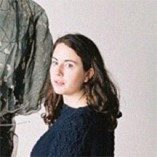
Artist(s)
Ciara Harrison
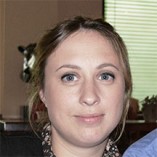
Teacher(s)
Judy Lawler
Artforms
School Level
School/
Participant Group
St. Marys Junior National School
No. Participants
24
Region
Age/Class
5-6 / Senior Infants
Dates
12 February - 23 April 2015
Weblinks
www.learncraftdesign.ie
Leading Agency
The Design and Crafts Council of Ireland
Key themes/ lines of enquiry
Natural habitat: native leaves, insects, trees, plants and animals.
Curriculum Strands
Science, English, Visual Arts, Geography
An important aspect of the collaboration between teacher and artist is the respect given to each other’s expertise.
Ciara Harrison, Artist

